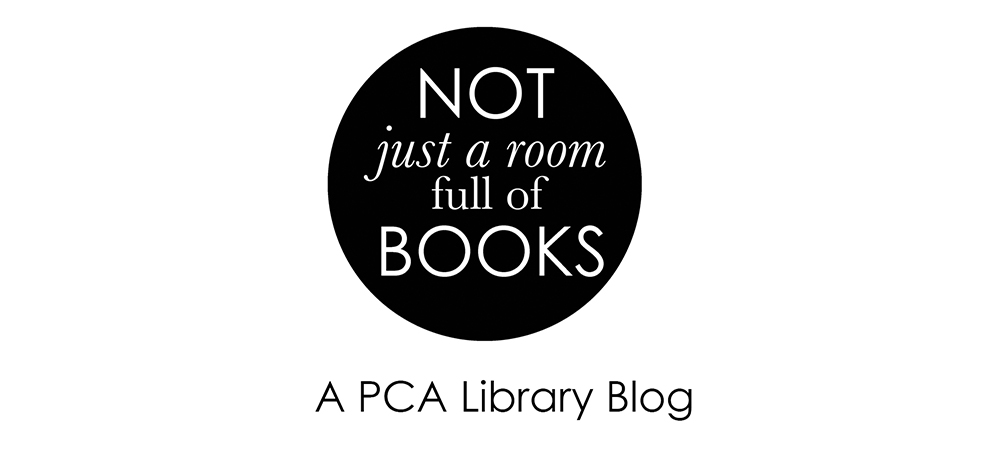The Library has a wide range of book resources for Graphic Designers, and there are many different areas in the Library's collections which might be of invaluable use to you. Library staff are always on hand to help you find just what you are looking for, so please do not hesitate to ask.
The myth of innovation is that brilliant ideas leap fully
formed from the minds of geniuses. The reality is that most innovations come
from a process of rigorous examination through which great ideas are identified
and developed before being realized as new offerings and capabilities.
This book introduces the idea of design thinking‚ the
collaborative process by which the designer′s sensibilities and methods are
employed to match people′s needs not only with what is technically feasible and
a viable business strategy. In short‚ design thinking converts need into
demand. It′s a human−centred approach to problem solving that helps people and
organizations become more innovative and more creative. Design thinking is not
just applicable to so−called creative industries or people who work in the
design field. It′s a methodology that has been used by organizations such as
Kaiser Permanente to increase the quality of patient care by re−examining the
ways that their nurses manage shift change‚ or Kraft to rethink supply chain
management. This is not a book by designers for designers; this is a book for
creative leaders seeking to infuse design thinking into every level of an
organization‚ product‚ or service to drive new alternatives for business and
society.
By moving beyond traditional aesthetic categories (beauty,
the sublime, the religious), Eco-
Aesthetics takes an inter-disciplinary
approach bridging the arts, humanities and social sciences and explores what
aesthetics might mean in the 21st century. It is one in a series of new,
radical aesthetics promoting debate, confronting convention and formulating
alternative ways of thinking about art practice. There is no doubt that the
social and environmental spheres are interconnected but can art and artists
really make a difference to the global environmental crisis? Can art practice
meaningfully contribute to the development of sustainable lifestyles? Malcolm
Miles explores the strands of eco-art, eco-aesthetics and contemporary
aesthetic theories, offering timely critiques of consumerism and globalisation
and, ultimately, offers a possible formulation of an engaged eco-aesthetic for
the early 21st century.
The titles in our best-selling Design Brief series are
highly praised by graphic design students, educators, and professionals
worldwide as invaluable resources. Each beautifully designed, affordable volume
offers a concise overview of a design fundamental the hows of design. But as most
seasoned designers will tell you, a comprehensive education also requires an
understanding of the whys of design practice. Graphic Design Theory presents
groundbreaking, primary texts from the most important historical and contemporary
designthinkers. From Aleksandr Rodchenko's "Who We Are: Manifesto of the
Constructivist Group" to Kenya Hara's "Computer Technology and
Design," this essential volume provides the necessary foundation for
contemporary critical vocabulary and thought. Graphic Design Theory is
organized in three sections: "Creating the Field" traces the
evolution of graphic design over the course of the early 1900s, including
influential avant-garde ideas of futurism, constructivism, and the Bauhaus;
"Building on Success" covers the mid-to late twentieth century and
considers the International Style, modernism, and postmodernism; and "Mapping the Future" opens at
the end of the last century and includes current discussions on legibility,
social responsibility, and new media. Striking color images illustrate each of
the movements discussed and demonstrate the ongoing relationship between theory
and practice. A brief commentary prefaces each text, providing a cultural and
historical framework through which the work can be evaluated. Authors include
such influential designers as Herbert Bayer, Lszl Moholy Nagy, Karl Gerstner,
Katherine McCoy, Michael Rock, Lev Manovich, Ellen Lupton, and Lorraine Wild.
Additional features include a timeline, glossary, and
bibliography for further reading. A must-have survey for graduate and
undergraduate courses in design history, theory, and contemporary issues, Graphic
Design Theory invites designers and interested readers of all levels to plunge
into the world of design discourse.
One of the seminal texts of graphic design, Paul Rand's
Thoughts on Design is now back in print for the first time since the 1970s.
Writing at the height of his career, Rand articulated in his slender volume the
pioneering vision that all design should seamlessly integrate form and
function. This facsimile edition preserves Rand's original 1947 essay with the
adjustments he made to its text and imagery for a revised printing in 1970 and
adds only an informative and inspiring new foreword by design luminary Michael
Bierut. As relevant today as it was when first published, this classic treatise
is an indispensable addition to the library of every designer.
Type Rules!, Fourth Edition is an up-to-date, thorough
introduction to the principles and practices of typography. From the
fundamentals to cutting-edge applications, this edition has everything today's
serious designer needs to use type effectively. Dozens of exercises reinforce
authoritative coverage on such topics as how to select the appropriate type for
the job, how to set type like a pro, and how to design a typeface, as well as
how to fully harness the power of major design packages including the Adobe
Creative Suite.






No comments:
Post a Comment